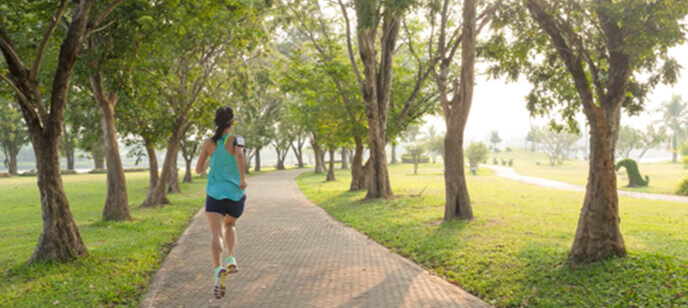MOVE TO A GREENER PART OF THE CITY.

It was only in 2015 when South Bangalore’s BTM Layout, a booming residential area popular for restaurants, office towers and highways was cited as India’s area with the most toxic air by the National Air Quality Index. 2015-16 released a report titled ‘Airpocalypse’ which was a detailed study of the quality of air in 168 cities. Bengaluru was ranked 63rd in this study for PM 2.5 levels, while New Delhi ranked first. The worst spot in the city was the busy Peenya junction, with a peak pollution of nearly 1300 ug/m3, which is 26 times what the World Health Organization (WHO) considers safe and 13 times India’s own pollution recommendation. Christ College on Hosur road was also found to have a dangerously high average. Another survey conducted by Breathe Blue in 2015 found that the Garden City has 14% school-going children suffering because of air pollution.
This is a one-off case as other cities in Karnataka, including Hassan, Mangaluru, Mysuru, Mandya and Chitradurga emerged as the least polluted occupying the last slots in the list. The major causes of pollution in Bengaluru is attributed to emission from factories and vehicular pollution. And this has only been increasing with time as official ambient air quality monitoring has already shown 57% increase in particulate matter in just 4 years (2010-2014) and 23% in one year (2014-15). The levels have also been found to exceed in more than 85% of monitoring locations. This is not good news as Indians are increasingly getting concerned about the quality of air that they breathe which is why living in the outskirts of the city is increasingly getting more attention.
From a city of lakes to cases of drought
Bengaluru has seen rapid urbanisation and overpopulation in the last decade. Water conflicts have become a norm in Karnataka as it is not just the Cauvery crisis that has shaken the entire nation, but also the other two main water resources – Krishna Sagar Dam and the Arkavathi have also gone dry. Karnataka is facing a severe water crisis for the fourth consecutive season as less than 20% water is left in 9 of Karnataka’s 12 dams.
The amount of rainfall received by the state in 2016 monsoon has further aggravated this issue of water shortage. As per the KSNDMC report of 2016, Karnataka received 29% less rain as compared to 2015, which was also a year marked by drought. The efforts of rainwater harvesting have also not been fully met. Out of the annual rainfall that the city gets, the use of over 3 lakh borewells to draw ground water amounts to almost three and a half times water drawn than the amount received to recharge it. Adding to this distraught situation, according to a CAG report titled ‘Water Pollution in India’, only 10 percent of sewage water is treated in Bengaluru. The remaining 1080 million litres of sewerage water remains untreated, thereby becoming a primary source of pollution for the Cauvery river.
Disappearing lakes and increasing population
In 1790, a British captain had described Bangalore as ‘the land of thousand lakes’. The number has now reduced to just 81. Of these very few remaining, more than half of them are contaminated with sewage. The groundwater level has sunk from a depth of 150 or 200 feet to 1000 feet in most places. This deepening water crisis in the city has inflated prices of supply water by private tankers in areas such as Whitefield and Sarjapur by nearly 40%
Thanks to the IT boom, the city has seen phenomenal growth since the 2000s. Bangalore’s population has nearly doubled from 5.7 million in 2001 to 10.5 million in 2017. By 2020, more than 2 million IT professionals are expected to live here. The urban landscape of the city has also seen a massive growth but has not been accompanied by the parallel development of water pipes in the fastest growing areas, such as Whitefield.
Currently, the population of the city under BBMP limits is 11 million, but this excludes the urbanised areas of Devanahalli, Hoskote, Nelamangala, Bidadi and Doddaballapura. The central and urbanised parts of the city are not in good condition which might make people reconsider their choices of living there. Devanahalli, for example, is seeing a new spurt of growth with the Kempegowda International Airport. The level of pollution here is low and it is also a place where clean lakes still exist. Will a pool of educated Indians soon move to the outskirts that offer a better quality of life and availability of water? Only time shall tell.
Brigade Orchards is a Smart Township that will revolutionise the urban lifestyle by integrating more than just the ordinary into a single enclave. This is sure to change the way Bangaloreans live today. Similarly, Brigade Group is developing another smart township, Brigade Sanctuary, which offers 3 & 4 BHK luxury apartments near Whitefield-Sarjapur Road. While designing this township, the environment has been kept central to the development. Renowned sustainability experts were brought in to create a self-sufficient water recharging system. The natural rainwater pattern was mapped, check dams and large ponds were created to conserve water. Trees from the original orchard have been retained to improve and replenish the levels of ground water. Similarly, Brigade Oasis, is an 80-acres plotted development in Devanahalli that features over 900 premium plots with vast landscapes. All this leading to a healthy and sustainable lifestyle.
Discover the exceptional offerings from Brigade Group, including Brigade Calista for a vibrant downtown living experience and excellent connectivity, and Brigade Valencia, offering a relaxed yet spontaneous living experience. Check out Brigade Group's latest mixed-use development in Hyderabad—Brigade Gateway!
#Devanahalli #North of Bangalore #work-life balance #Kempegowda International Airport #6-lane expressway #air quality #sustainability #aerotropolis #Devanahalli good alternative #Aviation hub #Brigade Orchards #Smart Township #Signature Club Resort





